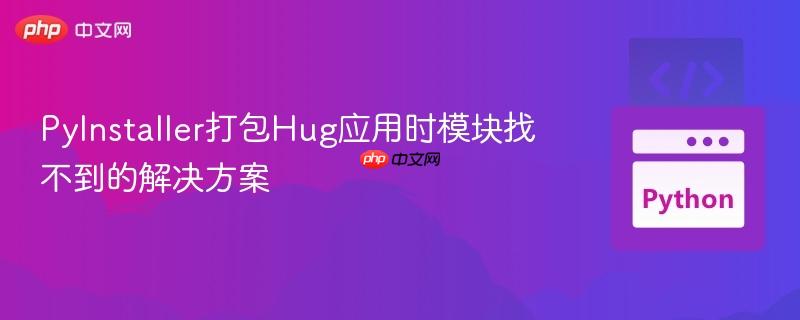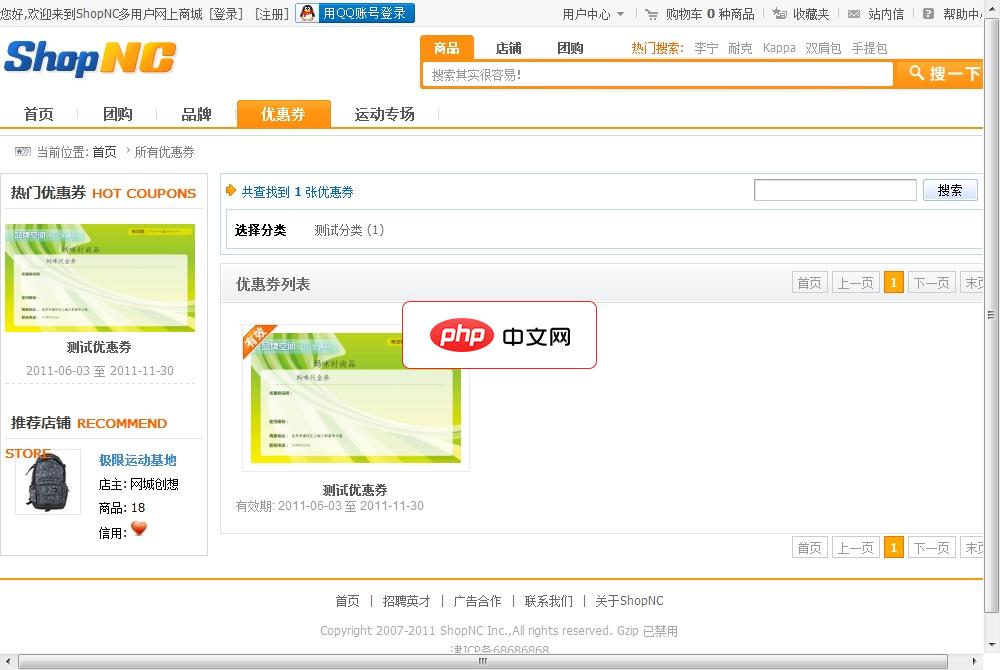
本文针对pyinstaller打包python应用时,因使用`subprocess`调用外部`hug`命令导致`filenotfounderror`的问题,提出了一种优雅的解决方案。通过直接调用`hug`库的内部api而非外部进程,结合`sys.argv`传递参数,可有效避免打包后无法找到`hug`命令及`api.py`文件的问题,从而实现pyinstaller与`hug`应用的无缝集成。
在使用PyInstaller将Python应用程序打包成独立的可执行文件时,如果应用程序内部通过subprocess.run调用了外部命令,例如hug -f api.py来启动一个hug Web服务器,可能会遇到FileNotFoundError。这通常发生在打包后的可执行文件尝试运行时。
假设项目结构如下:
├── demo │ ├── mypkg │ │ └── __main__.py │ │ └── api.py │ │ └── startserver.py │ └── readme.md
其中,api.py定义了hug接口:
import hug
@hug.get('/ping')
def ping():
return {"response": "pong"}startserver.py负责启动hug服务器:
import os
import subprocess
import traceback
from pathlib import Path
def start():
try:
currentpath = Path(__file__)
apipath = os.path.join(currentpath.parent, 'api.py')
print(f'Currently executing from {currentpath}')
print(f'parse api path is {apipath}')
print('inside startserver start()')
with open('testapi.log', 'w') as fd:
# 问题所在:通过subprocess调用外部hug命令
subprocess.run(['hug', '-f', apipath], stdout=fd , stderr=subprocess.STDOUT, bufsize=0)
except Exception:
print(traceback.format_exc())__main__.py是应用程序的入口点:
import traceback
from mypkg.startserver import start
def main():
try:
start()
except Exception:
print(traceback.format_exc())
if __name__ == "__main__":
print('... inside name == main ...')
main()当通过python -m mypkg直接运行时,一切正常。然而,使用PyInstaller打包后,运行生成的可执行文件时,会抛出FileNotFoundError: [WinError 2] The system cannot find the file specified。错误信息显示,subprocess无法找到hug命令,也无法正确处理PyInstaller临时解压路径下的api.py。
解决此问题的最佳方法是避免使用subprocess调用外部hug命令。hug库本身提供了Python API来启动其开发服务器。通过直接导入和调用这些内部函数,我们可以消除对外部命令的依赖,并更好地与PyInstaller集成。
hug命令的本质是一个Python脚本,其核心功能是通过hug.development_runner.hug.interface.cli()来启动。我们可以直接在Python代码中调用这个函数,并模拟命令行参数的传递。

ShopNC多用户商城,全新的框架体系,呈现给您不同于以往的操作模式,更简约的界面,更流畅的搜索机制,更具人性化的管理后台操作,更适应现在网络的运营模式解决方案,为您的创业之路打下了坚实的基础,你们的需求就是我们的动力。我们在原有的C-C模式的基础上更增添了时下最流行的团购频道,进一步的为您提高用户的活跃度以及黏性提供帮助。ShopNC商城系统V2.4版本新增功能及修改功能如下:微商城频道A、商城
 0
0

除了os, sys, pathlib,还需要从hug库中导入development_runner。
import os import sys from pathlib import Path from hug import development_runner
与之前类似,使用Path(__file__).parent获取当前脚本所在目录,并构建api.py的绝对路径。
currentpath = Path(__file__) apipath = os.path.join(currentpath.parent, 'api.py')
hug.development_runner.hug.interface.cli()函数会解析sys.argv来获取命令行参数。为了模拟hug -f api.py的行为,我们需要将-f和api.py的路径添加到sys.argv中。请注意,sys.argv的第一个元素通常是脚本名称,所以我们只需追加额外的参数。
sys.argv.append('-f')
sys.argv.append(apipath)现在,可以直接调用development_runner.hug.interface.cli()来启动hug服务器。
development_runner.hug.interface.cli()
结合上述步骤,修改后的startserver.py将如下所示:
import os
import sys
import traceback
from pathlib import Path
from hug import development_runner # 导入hug的开发运行器
def start():
try:
currentpath = Path(__file__)
# 构建api.py的绝对路径
apipath = os.path.join(currentpath.parent, 'api.py')
print(f'Currently executing from {currentpath}')
print(f'parse api path is {apipath}')
print('inside startserver start()')
# 清除可能存在的旧参数,确保只传递当前需要的参数
# 如果 sys.argv 在其他地方被修改,这里可能需要更精细的控制
# 简单的做法是,确保在调用 cli() 之前,sys.argv 包含正确的参数
# 这里我们假设在调用 start() 之前,sys.argv 只有一个元素(脚本名)
# 或者,我们只追加需要的参数,hug CLI会处理这些参数
# 模拟命令行参数:-f 和 api.py 的路径
sys.argv.append('-f')
sys.argv.append(apipath)
# 直接调用hug的CLI入口函数,而不是通过subprocess
development_runner.hug.interface.cli()
except Exception:
print(traceback.format_exc())
通过这样的改造,PyInstaller打包后的可执行文件将不再依赖系统环境中是否存在hug命令,而是直接在Python进程内部启动hug服务器,从而避免了FileNotFoundError。
通过采用直接调用hug内部API的策略,我们可以优雅地解决PyInstaller打包hug应用时遇到的FileNotFoundError,使打包过程更加顺畅,生成的可执行文件更加健壮。这种方法也适用于其他提供内部Python API而非仅命令行接口的库。
以上就是PyInstaller打包Hug应用时模块找不到的解决方案的详细内容,更多请关注php中文网其它相关文章!

每个人都需要一台速度更快、更稳定的 PC。随着时间的推移,垃圾文件、旧注册表数据和不必要的后台进程会占用资源并降低性能。幸运的是,许多工具可以让 Windows 保持平稳运行。

Copyright 2014-2025 https://www.php.cn/ All Rights Reserved | php.cn | 湘ICP备2023035733号